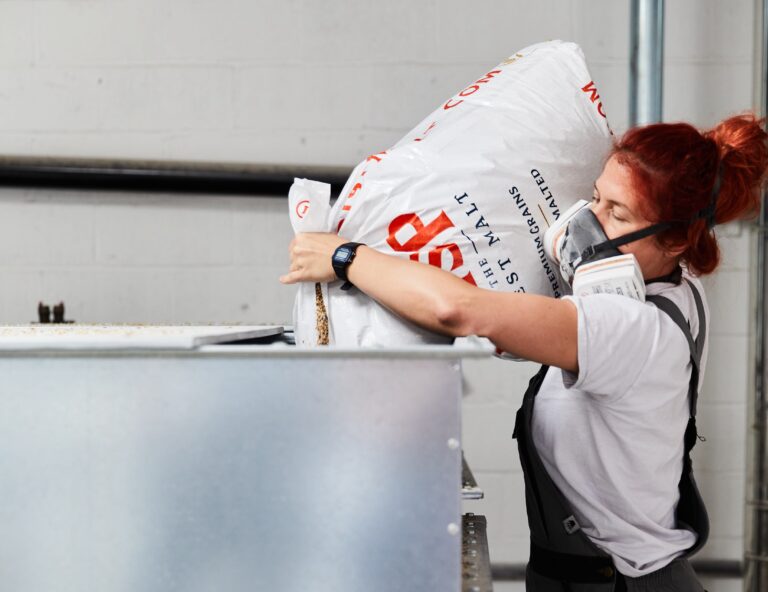With more people choosing to buy their beer from supermarkets rather than pubs, there’s never been a better time for craft breweries to enter this market. However, competition is fierce and brewers’ choice of microbial control method could be key to their success. Oliver Rudman, application engineering specialist for the Separation and Purification Sciences Division at 3M, the science-based technology company, explains.
The popularity of craft beer with consumers shows few signs of abating. According to SIBA’s British Craft Beer Report 2019, 24 per cent of consumers would be more likely to visit a pub or restaurant if it had a good selection of craft beer.1
Yet increasingly, they are drinking at home. Indeed, 16 per cent would consider switching where they do their shopping based on the range of craft beer a supermarket offers.2 Supermarkets have jumped on these trends, reporting sales growth of up to 40 per cent, and are doing their utmost to stock a wide variety of such beers, with some offering selections of up to 90 craft and speciality beers.3
It is welcome to see routes to market widen for craft beer but seizing this opportunity will require the stringent requirements set out by supermarkets to be met by breweries, and this can present significant production and cost challenges – particularly for smaller, independent operations.
While a perfectly balanced flavour profile attracts the connoisseurs, moving into wholesale selling means brewers need to ensure batch consistency and longer, more reliable shelf lives. Beer sold in supermarkets needs to be microbiologically stable, so stray bacteria can’t turn the product cloudy or encourage ongoing fermentation (which can have explosive results). Breweries need to account not just for how long a beer sits on the supermarket shelf, but also time spent in transit and even in the customer’s home as it waits to be drunk.
And the beer must taste the same, batch after batch, to preserve the flavour profiles that brewers have perfected as part of their unique brand and that their customers expect every time.
Key to achieving these goals is microbiological control, and brewers now have a choice of options. Traditionally, breweries have relied on pasteurisation techniques, but developments in filtration technology offer a credible alternative in the form of cold stabilisation, which also brings some additional benefits.
Pasteurisation involves heating beer to a temperature at which microbial life can no longer exist. There are two common variants of the process. The first, and more traditional, is tunnel pasteurisation, where cans or bottles of beer are moved on an enclosed conveyor before being immersed in, or sprayed by, hot water.
Flash pasteurisation
However, this method has recently been superseded by flash pasteurisation, often referred to as high-temperature, short time (HTST) processing. In HTST processes, beer is heated to high temperatures for just a matter of seconds, or the beer is sent through a thermal bypass system to kill off any bacterial life.
Through the process, the room-temperature shelf-life of a beer can be increased by more than 120 days and, provided the line pressure is tightly regulated, it preserves all the flavours and gasses created during the brewing process.
But many breweries choose not to use flash pasteurisation. While it preserves the makeup of the beer, the process can cause early oxidation4, and sometimes the denaturing of flavours, leading to staleness. According to Henry’s Law, by heating the beer, its gas saturation index is lowered, reducing its ability to retain dissolved gasses such as carbon dioxide – which can result in flat beer.
Further, the equipment required for pasteurisation can constitute a significant capital investment and the process is hugely expensive at large scales owing to rising energy costs and the large amounts of water needed.
Therefore, many breweries – especially the smaller ones – are turning to sterile filtration. This process, also known as cold stabilisation, relies on the use of filter membranes that are capable of catching even the smallest of microbial life – down to 0.2µm in size, if necessary (although most beer can be considered sterile if it is filtered down to the 0.45μm). Using the process, a brewery could expect to extend the shelf life of its beer by 120-180 days when it is stored at room temperature.
Because sterile filtration takes place at ambient temperatures, there is less chance of oxidation or the denaturing of the flavour components in the beer occurring, thus maintaining its profile. By choosing the correct membrane for the specific beer being produced (and the relevant spoilage bacteria to be filtered) the process can be highly optimised.
Sterile filtration doesn’t require the application of heat to work, so there is no need for heat exchangers or cooling systems, saving energy costs. Further, the optimum line pressure required for sterile filtration is around one barg, whereas pasteurisation plants are regulated at approximately 10-14 barg.
Cold stabilisation
Therefore, the need for booster pumps, and the energy costs associated with running them against a high differential pressure, can be avoided. Moreover, unlike pasteurisation plants, these filters and their housings require very little floorspace and are easy to fit and maintain.
Some breweries claim that membranes can strip flavour from the beer by trapping flavour components, but as sterile filtration is much gentler on the product, it typically results in a fresher, more natural flavour than that achieved with flash pasteurisation. Rare cases where there is an impact on taste can often be caused by the use of an unsuitable filter, and test work carried out by application engineering teams can point the brewer in the direction of the best filter for its process.
Perhaps the only drawback to cold stabilisation in comparison with pasteurisation is the increased spend on consumables it requires. Blocked filters need to be replaced at the end of their working lives. However, through recent advances in membrane technology, the rate at which this blockage occurs has been reduced and they are now more easily cleaned—making the cold stabilisation process far more economical.
Filters often become blocked by a build-up of colloidal material such as protein and agglomerations of carbohydrates, rather than micro-organisms. By tweaking the base chemistry of the filter membranes, the likelihood of these substances binding to them can be reduced, lowering the rate of blockage, and by modifying the construction of the filters to, for instance, increase their filtration areas, a further extension to their working lives can be achieved.
As we have seen, cold stabilisation possesses a number of advantages over more traditional pasteurisation processes to achieve microbiological stability. As breweries, particularly smaller ones, become more aware of these benefits, they will be able to compete confidently and cost effectively for space on supermarket shelves.
Sources
3.www.thedrinksbusiness.com/2017/05/are-craft-brewers-selling-out-the-indies-in-supermarket-move/
4. https://onlinelibrary.wiley.com/doi/pdf/10.1002/j.2050-0416.2011.tb00508.x









